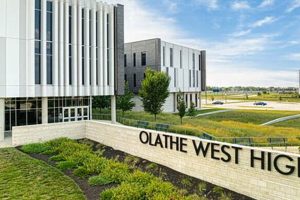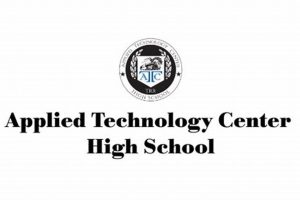Dramatic productions in secondary education settings encompass a wide range of possibilities, from established classics like “Oklahoma!” and “The Sound of Music” to contemporary works such as “Dear Evan Hansen” and “Hamilton.” These productions can also include student-written and composed original works, showcasing unique creativity and talent. A typical production involves students in acting, singing, dancing, set design, costume creation, lighting, and sound engineering, providing valuable practical experience.
Engaging with theatrical arts offers significant developmental benefits for adolescents. Participation fosters teamwork, discipline, communication skills, and self-confidence. Students involved in these productions gain a deeper understanding of literature, music, and history while developing creative problem-solving abilities and artistic expression. Historically, high school theatre programs have served as a launching pad for numerous successful careers in the performing arts and related fields, underscoring their enduring value in education.
This discussion will explore various aspects of theatrical productions in secondary education, including selecting appropriate material, managing the production process, integrating these activities into the curriculum, and highlighting the long-term benefits for students.
Tips for Successful High School Musical Productions
Producing a successful musical requires careful planning and execution. The following tips offer guidance for schools embarking on such a project.
Tip 1: Select Material Wisely: Consider the students’ skill levels, available resources, and the overall educational goals. Choosing a show that challenges students appropriately while remaining within feasible production parameters is crucial.
Tip 2: Secure Necessary Resources: Ensure adequate funding, performance spaces, costumes, props, and technical equipment are available before commencing the project. Early planning and resource acquisition mitigate potential setbacks.
Tip 3: Foster Collaboration: Encourage teamwork and communication among students, faculty, and parent volunteers. A collaborative environment ensures a smoother production process and a stronger sense of community.
Tip 4: Provide Mentorship and Guidance: Experienced directors and mentors can provide valuable support to students throughout the production process. This guidance nurtures talent and fosters a deeper understanding of theatrical arts.
Tip 5: Integrate Curriculum Connections: Connect the production to relevant academic subjects like literature, music, history, and even STEM fields through set design and technical elements. This integration enriches the educational experience.
Tip 6: Emphasize Process Over Product: While a successful performance is the ultimate goal, focus on the learning process and skill development throughout rehearsals and preparations. This approach fosters long-term growth and a deeper appreciation for the arts.
Tip 7: Celebrate Achievements: Recognize and celebrate the hard work and dedication of all involved. Post-performance celebrations reinforce the value of teamwork and artistic achievement.
By implementing these strategies, schools can create enriching and rewarding theatrical experiences that benefit students both academically and personally.
These tips provide a solid foundation for successful high school productions. Further exploration of these concepts will follow.
1. Classic Musicals
Classic musicals offer high schools a rich repertoire for theatrical productions, providing established frameworks for student learning and performance. These works often come with readily available resources and established performance histories, offering valuable pedagogical tools and opportunities for engagement with theatrical traditions. Exploring classic musicals allows students to connect with enduring narratives and musical styles.
- Accessibility and Resources
Classic musicals often have readily available scripts, scores, and performance materials. Numerous resources, including recordings, analyses, and historical contexts, offer valuable support for high school productions. This accessibility makes them practical choices for schools with varying budget and resource levels. For instance, productions of “Guys and Dolls” or “The Music Man” benefit from widely available orchestral arrangements adaptable for student musicians.
- Educational Value and Skill Development
Working with classic musicals allows students to develop a range of skills, from vocal performance and acting to set design and costume creation. These productions often require complex musical arrangements and choreography, challenging students to refine their technical abilities. Furthermore, classic musicals frequently explore complex themes and narratives, offering opportunities for critical analysis and interpretation. “West Side Story,” for example, allows students to explore themes of social prejudice and cultural conflict.
- Community Engagement and Audience Appeal
Classic musicals often hold broad audience appeal due to their familiarity and enduring popularity. Producing well-known works can generate community interest and support for school arts programs. This engagement can foster stronger connections between schools and their communities, enhancing the overall impact of the production. A production of “Fiddler on the Roof” can resonate with a multi-generational audience and spark community dialogue.
- Historical and Cultural Context
Classic musicals provide insights into historical periods, social contexts, and artistic styles. Exploring the historical background of these productions can enrich the educational experience and deepen student understanding of the work. Studying a musical like “Hairspray,” for example, provides opportunities to discuss the Civil Rights Movement and social change.
By engaging with classic musicals, high schools can provide students with valuable performance opportunities, develop essential theatrical skills, and foster a deeper appreciation for the arts. These productions serve as a bridge between established theatrical traditions and contemporary educational practices, enriching both students and their communities.
2. Contemporary Works
Contemporary musicals offer high schools unique opportunities to engage with current social themes, modern musical styles, and innovative theatrical techniques. These works often resonate deeply with students due to their relevance to contemporary life and provide valuable platforms for exploring complex issues and promoting dialogue. Selecting contemporary works for high school productions necessitates careful consideration of content, resources, and educational goals. Productions of contemporary musicals can significantly impact students’ artistic development and social awareness.
Contemporary musicals frequently tackle complex themes such as identity, mental health, and social justice. “Dear Evan Hansen,” for instance, explores themes of social isolation and anxiety in the digital age, while “Be More Chill” delves into the pressures of adolescence and the allure of technology. These narratives provide opportunities for students to engage with relevant social issues and develop critical thinking skills. Furthermore, contemporary works often feature diverse characters and storylines, promoting inclusivity and representation in high school theater programs. The musical “In the Heights” celebrates Latinx culture and community, offering valuable cultural insights and promoting cross-cultural understanding. Choosing contemporary works allows educators to connect with students through shared cultural experiences and foster a more inclusive learning environment.
However, incorporating contemporary works into high school productions presents certain challenges. Licensing fees for newer musicals can be higher than those for classic works, requiring careful budget management. Furthermore, some contemporary works may contain mature themes or language that necessitate careful consideration of the target audience and school community standards. Open communication with parents and administrators is essential when selecting potentially sensitive material. Despite these challenges, the educational and artistic benefits of engaging with contemporary works often outweigh the logistical hurdles. By carefully selecting appropriate material and fostering open dialogue, high schools can leverage the power of contemporary musicals to engage students, promote critical thinking, and foster a deeper understanding of contemporary society.
3. Original Productions
Original productions represent a unique facet of high school musical theater, offering unparalleled opportunities for student creativity and artistic exploration. Unlike working with established material, original productions empower students to develop their own narratives, compose original music, and craft unique theatrical experiences. This process fosters deeper engagement with the artistic process, encouraging students to develop creative problem-solving skills, collaborate effectively, and express their unique perspectives. Original productions can range from small-scale student-written one-act plays with original songs to full-length musicals developed through collaborative class projects. A school might, for example, create a musical based on local history or develop a contemporary narrative reflecting student experiences. The Fredrick Gunn Schools production of “Our Town: Our Time,” a student-devised adaptation of Thornton Wilders classic, exemplifies how original productions can breathe new life into existing works while providing students with creative ownership.
The benefits of undertaking original productions extend beyond artistic development. Students involved in these projects gain practical experience in all aspects of theatrical production, from scriptwriting and composing to directing, performing, and managing technical elements. Such experiences cultivate essential skills applicable beyond the arts, including project management, communication, and teamwork. Moreover, original productions offer a platform for students to explore complex themes and express their unique voices, contributing to a vibrant and dynamic school community. The process can also foster a deeper appreciation for the collaborative nature of artistic creation, as students work together to bring their vision to life. Challenges inherent in original productions, such as securing resources and managing creative differences, become valuable learning experiences in themselves, preparing students for future collaborative endeavors. The example of Trumbull High School’s annual student-written and composed musical showcases the potential of original productions to foster exceptional talent and provide a platform for student voices.
Original productions offer a powerful means of fostering creativity, developing essential skills, and enriching the educational experience within high school musical theater programs. While presenting unique challenges, the potential for student growth and artistic expression makes original productions a valuable component of a comprehensive high school arts education. These projects empower students to become active creators and contributors to the artistic landscape, fostering a lifelong appreciation for the arts and preparing them for future creative endeavors. Supporting and nurturing original productions within high school settings cultivates a dynamic and evolving artistic community that benefits both individual students and the broader educational environment.
4. Student-led Initiatives
Student-led initiatives represent a powerful approach to enhancing high school musical theater programs. These initiatives, encompassing various aspects of production, from directing and choreography to set design and marketing, empower students to take ownership of the creative process and develop essential leadership skills. When students lead, they gain practical experience in decision-making, collaboration, and problem-solving, fostering a deeper sense of investment and responsibility. Such initiatives can manifest in various forms, such as student-directed one-act plays, student-composed musical scores for existing productions, or student-managed marketing campaigns. For instance, a student might take the lead in designing the lighting for a production of “Chicago,” requiring them to research period-appropriate lighting techniques and manage the technical execution. This experience offers valuable practical training and fosters leadership development.
The impact of student leadership extends beyond individual skill development. Student-led initiatives foster a more collaborative and dynamic learning environment. When students assume leadership roles, they contribute unique perspectives and creative solutions, enriching the overall production. Furthermore, these initiatives often lead to greater student engagement and ownership. Students are more likely to invest fully in projects they lead, resulting in higher quality productions and a stronger sense of community within the theater program. A concrete example is the student-led fundraising campaign for a school’s production of “Les Misrables.” Students might organize bake sales, car washes, or online crowdfunding initiatives, demonstrating entrepreneurial skills and contributing directly to the production’s success. Such initiatives demonstrate the practical application of leadership principles within a creative context.
Cultivating student leadership within high school musical theater programs necessitates intentional support and guidance from educators. Providing students with opportunities to take on leadership roles, coupled with appropriate mentorship and resources, empowers them to develop essential skills and contribute meaningfully to the artistic community. Addressing potential challenges, such as managing interpersonal dynamics within student teams and ensuring equitable access to leadership opportunities, is crucial for ensuring the positive impact of student-led initiatives. By fostering student leadership, high schools can create more dynamic and enriching theatrical experiences, nurturing future generations of artists and leaders. The success of student-led theatrical productions, such as the entirely student-run Shakespeare in the Park programs found in some high schools, underscores the potential of these initiatives to enrich both individual student development and the overall quality of high school arts programs.
5. Community Collaborations
Community collaborations offer significant enhancements to high school musical theater programs. These partnerships, formed with local theaters, arts organizations, universities, or individual artists, provide students with access to expertise, resources, and performance opportunities beyond the typical school environment. Such collaborations can involve professional actors leading workshops on character development, musicians providing masterclasses on musical performance, or local theaters offering technical assistance with set design and construction. For example, a partnership with a university’s theater department might provide students with access to advanced lighting and sound equipment, enhancing the technical quality of their productions. The collaboration between Booker T. Washington High School for the Performing and Visual Arts and the Dallas Theater Center provides a concrete example of how such partnerships can provide students with professional mentorship and performance opportunities.
The benefits of community collaborations extend beyond technical and artistic development. These partnerships foster stronger connections between schools and their communities, creating opportunities for shared cultural experiences and promoting a broader appreciation for the arts. Students gain valuable insights into the professional world of theater, expanding their understanding of potential career paths and fostering a sense of belonging within a larger artistic community. Furthermore, community collaborations can provide valuable fundraising opportunities and increase public awareness of school arts programs. A local theater might host a joint fundraising performance with the high school, sharing proceeds and promoting both organizations. This type of collaboration benefits both the school and the community partner, creating a symbiotic relationship that strengthens the local arts ecosystem. The collaboration between Stagedoor Manor summer camp and various Broadway professionals exemplifies how community partnerships can provide students with direct access to industry professionals and enhance their training.
Cultivating successful community collaborations requires careful planning and communication. Establishing clear goals, defining roles and responsibilities, and fostering open communication between partners are essential for ensuring mutually beneficial outcomes. Challenges, such as scheduling conflicts and differing artistic visions, must be addressed proactively to ensure the success of the partnership. However, the potential rewards of community collaborations, including enhanced educational experiences for students, stronger community ties, and increased support for the arts, make these partnerships a valuable investment for high schools. These collaborative efforts demonstrate a commitment to providing students with a comprehensive arts education that extends beyond the classroom and prepares them for future engagement with the broader artistic world.
6. Cross-Curricular Integration
Integrating musical theater productions with other academic subjects enriches the educational experience and provides students with a deeper understanding of both the arts and other disciplines. This cross-curricular approach connects theatrical productions to relevant subjects like literature, history, social studies, mathematics, and science, demonstrating the practical application of concepts learned in the classroom and enhancing student engagement across multiple fields of study.
- Literature and Language Arts
Analyzing scripts, studying character development, and exploring dramatic structure provide direct connections to literature and language arts curricula. Students involved in a production of Shakespeare’s “A Midsummer Night’s Dream,” for example, gain a deeper understanding of the play’s language, themes, and historical context. Furthermore, the process of memorizing lines and interpreting characters enhances language skills and promotes critical thinking.
- History and Social Studies
Musical theater productions often explore historical events, social issues, and cultural contexts. A production of “Ragtime,” for instance, provides opportunities to explore the complexities of American society at the turn of the 20th century, including issues of immigration, race relations, and social change. Researching historical backgrounds and cultural contexts deepens student understanding of these periods and promotes historical analysis.
- Mathematics and Science
Set design, construction, lighting, and sound engineering involve practical applications of mathematical and scientific principles. Students designing and building sets for a production of “The Phantom of the Opera,” for example, utilize geometric calculations and structural engineering concepts. Managing lighting and sound requires an understanding of physics and acoustics. These practical applications demonstrate the relevance of STEM fields to the arts.
- Visual and Performing Arts
Cross-curricular connections within the arts themselves enhance students’ artistic development. Costume design, for instance, draws on visual arts principles, while choreography integrates elements of dance. A production of “The Lion King” provides opportunities to explore African art and music traditions, expanding students’ understanding of diverse artistic expressions. These connections foster a more holistic appreciation of the arts and promote interdisciplinary creativity.
By integrating musical theater productions with other academic subjects, educators create a more engaging and meaningful learning experience. This cross-curricular approach fosters a deeper understanding of both the arts and other disciplines, demonstrating the interconnectedness of knowledge and promoting a more holistic approach to education. Students develop transferable skills, enhance their critical thinking abilities, and gain a broader perspective on the world around them. The integration of musical theater into the curriculum fosters a dynamic learning environment where artistic expression and academic exploration complement and enrich one another.
7. Skill Development Focus
A focus on skill development is integral to the success and educational value of high school musical theater programs. Participating in these productions provides students with opportunities to cultivate a wide range of abilities, extending beyond performance skills to encompass technical proficiency, collaborative teamwork, and communication. This focus transforms theatrical productions from mere entertainment into valuable learning experiences. For instance, students involved in stage crew develop technical expertise in lighting, sound, and set construction, while those managing costumes gain practical sewing and design skills. These acquired skills often translate into real-world applications, preparing students for future careers in various fields, including the arts, entertainment, and technical production.
The emphasis on skill development within high school musicals fosters a growth mindset, encouraging students to embrace challenges and view mistakes as opportunities for learning. This approach nurtures resilience, perseverance, and a commitment to continuous improvement. Students learn to work effectively within a team, developing communication and collaboration skills essential for success in any field. The collaborative nature of musical theater also cultivates empathy and interpersonal skills, as students learn to understand and appreciate diverse perspectives. Examples include students learning to provide constructive feedback to fellow actors, stage managers coordinating complex rehearsal schedules, and student musicians adapting musical arrangements to suit the specific needs of a production. These experiences build valuable skills applicable far beyond the stage.
Prioritizing skill development ensures that high school musical theater programs offer substantial educational benefits alongside artistic expression. While the final performance serves as a culminating event, the true value lies in the journey of skill acquisition and personal growth throughout the production process. Addressing potential challenges, such as providing adequate resources and mentorship to support skill development, is crucial for maximizing the educational impact of these programs. By fostering a culture of learning and growth within high school musical theater, educators empower students to develop valuable skills, cultivate a lifelong appreciation for the arts, and prepare for future success in a variety of endeavors. This focus on skill development ultimately strengthens the overall quality and impact of high school musical theater, transforming it from an extracurricular activity into a powerful educational tool.
Frequently Asked Questions
This section addresses common inquiries regarding the selection and production of musicals in secondary school settings.
Question 1: How does one select an appropriate musical for a high school production?
Several factors influence musical selection: student skill level, available resources (budget, technical capabilities, performance space), and educational goals. Consider the size of the cast, the vocal and instrumental demands of the score, and the complexity of the production elements. Balancing ambition with practicality ensures a successful and enriching experience for all involved.
Question 2: What are the typical costs associated with producing a high school musical?
Costs vary significantly depending on the scale and complexity of the production. Expenses include licensing fees for the script and score, costumes, sets, props, lighting and sound equipment, and potentially choreographer or musical director fees. Careful budgeting and resource allocation are crucial for managing expenses effectively. Exploring fundraising opportunities and seeking community support can help offset costs.
Question 3: How can schools ensure inclusivity and diversity in their musical theater programs?
Promoting inclusivity and diversity requires conscious effort in casting, character portrayal, and storyline selection. Encourage diverse participation by actively recruiting students from all backgrounds and creating a welcoming and inclusive environment. Select musicals that represent a variety of cultures, perspectives, and experiences. Be mindful of potential stereotypes and biases in casting and character portrayal, ensuring respectful and authentic representations.
Question 4: What are the benefits of involving students in technical aspects of the production?
Involving students in technical roles, such as lighting, sound, set design, and construction, provides valuable learning opportunities and fosters a deeper understanding of the production process. Students develop practical skills in technical theater, gain experience in problem-solving and teamwork, and contribute meaningfully to the overall success of the production. These technical skills are transferable to various fields beyond the arts.
Question 5: How can schools manage potential challenges associated with producing a musical?
Challenges, such as scheduling conflicts, personality clashes, and technical difficulties, are inherent in any theatrical production. Open communication, proactive planning, and a collaborative approach are essential for mitigating these challenges. Establish clear expectations, foster a supportive environment, and encourage open dialogue among students and staff. Develop contingency plans for potential setbacks to ensure the production proceeds smoothly.
Question 6: How can schools assess the success of their musical theater programs?
Assessing program success extends beyond the final performance. Consider student learning outcomes, skill development, audience engagement, and overall impact on the school community. Gather feedback from students, staff, and audience members to evaluate the program’s effectiveness. Measure program growth by tracking participation rates, student skill progression, and the program’s contribution to the school’s overall arts education goals.
Careful planning, thoughtful selection of material, and a focus on student learning and development contribute significantly to successful and enriching musical theater experiences in high schools.
The subsequent sections will delve deeper into specific aspects of high school musical theater production.
The Power of Musical Theater in Secondary Education
Productions undertaken within educational settings offer significant opportunities for student growth, encompassing artistic expression, skill development, and personal enrichment. From classic works to contemporary pieces and original creations, the exploration of diverse theatrical material allows students to engage with complex narratives, explore universal themes, and develop a deeper understanding of dramatic arts. The integration of technical production elements, such as set design, lighting, and sound, provides practical application of STEM principles within a creative context. Furthermore, collaborations with community organizations and a focus on student leadership enhance the educational value of these experiences, fostering real-world connections and empowering students to take ownership of the creative process.
The transformative potential of theatrical productions in secondary education extends beyond individual student development. These programs enrich the entire school community, fostering collaboration, promoting creativity, and celebrating artistic achievement. Continued support and investment in these programs are crucial for nurturing future generations of artists, technicians, and engaged citizens. By providing students with opportunities to explore their creative potential and develop essential skills, these productions contribute significantly to a well-rounded education and prepare students for future success in a diverse range of endeavors.







